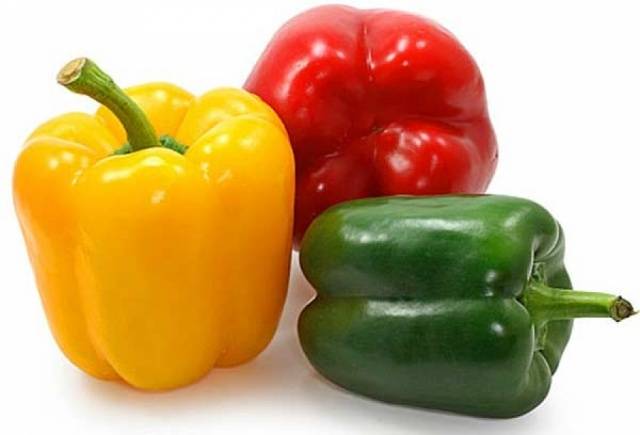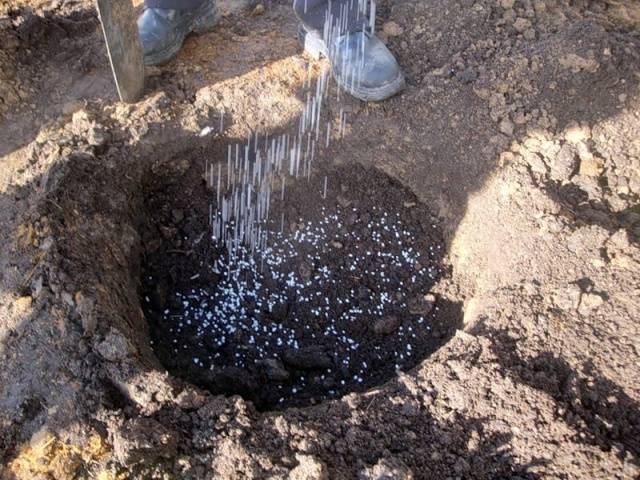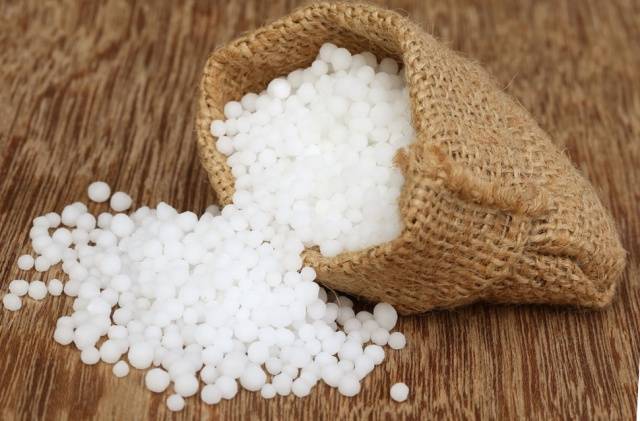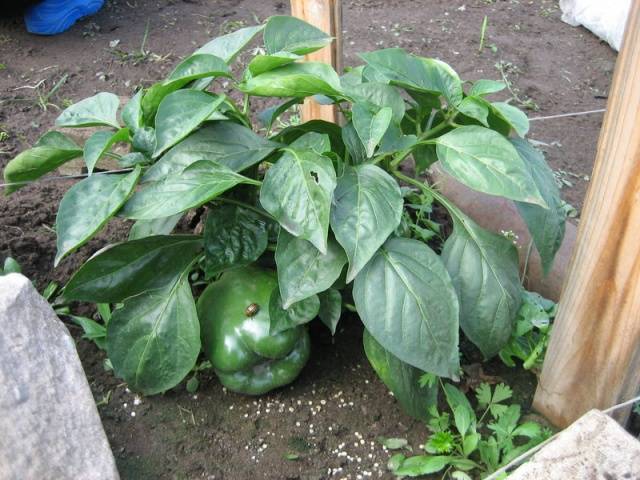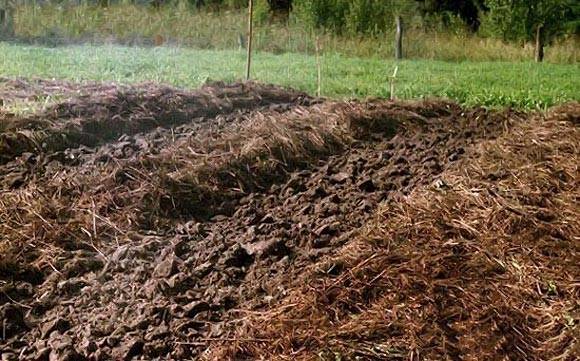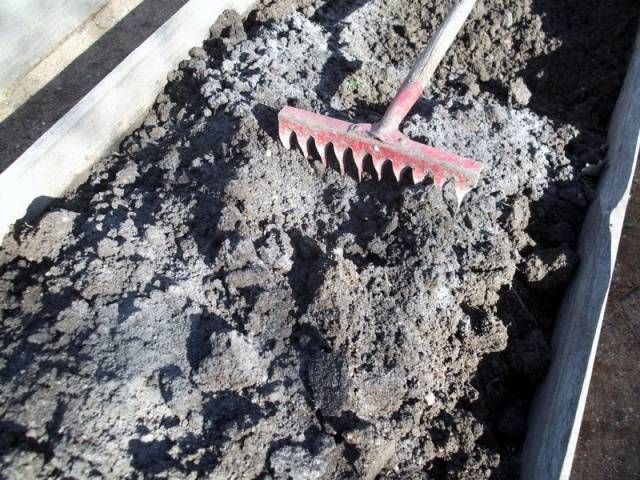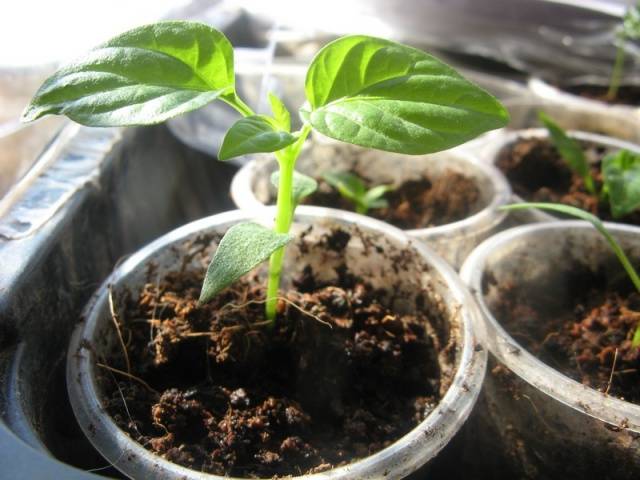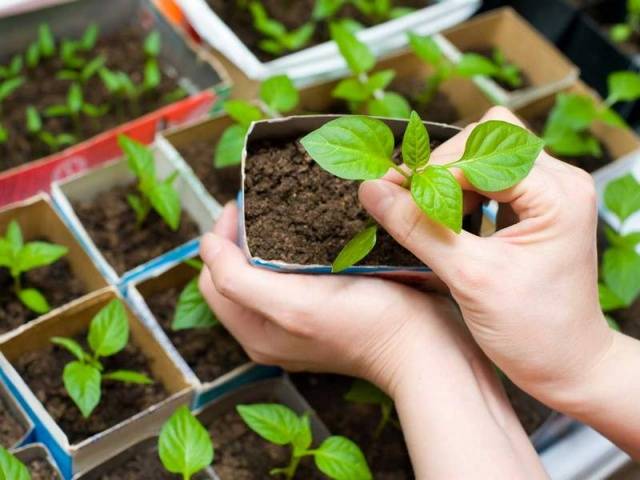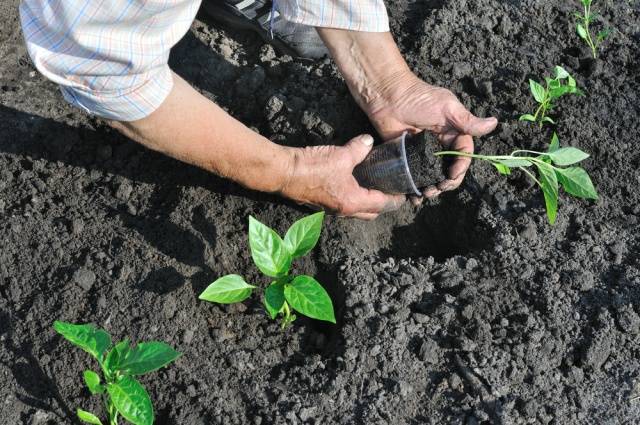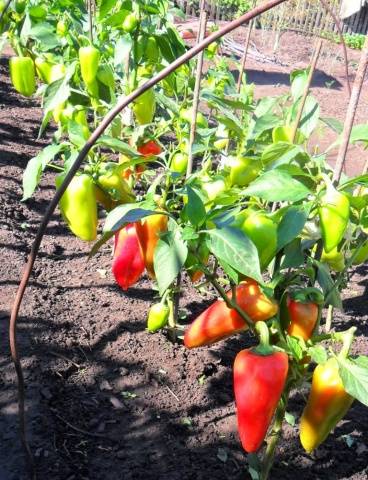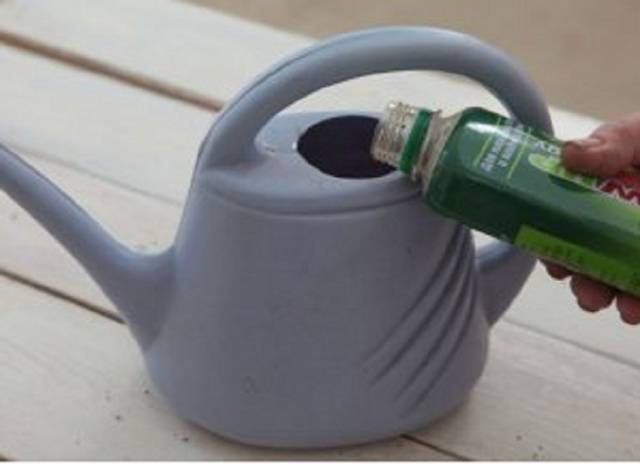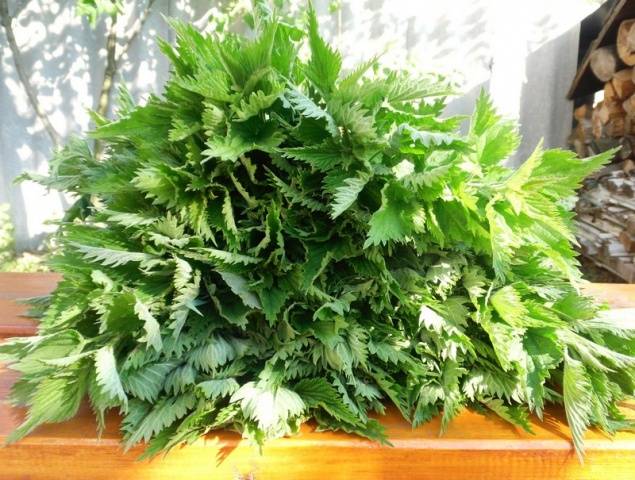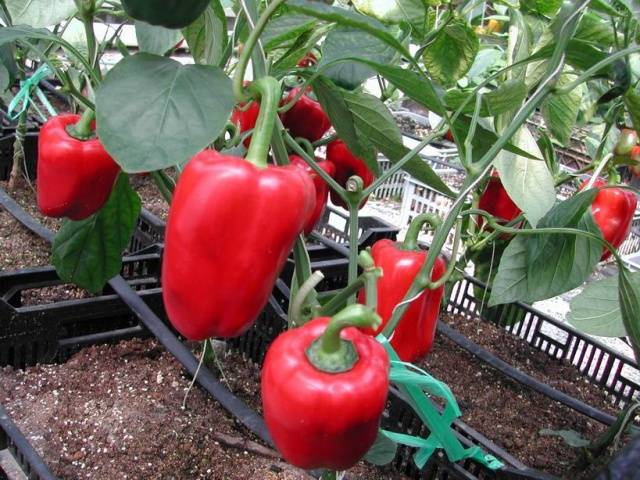Content
Bell pepper belongs to those garden crops that like to "eat", which means that it will have to be fertilized often and abundantly. Unlike its "relatives" - tomatoes, pepper is not afraid of overfeeding, on the contrary, there is such a rule: the more leaves on the bell pepper bushes, the more fruits ripen on them.
How to exercise feeding pepper after planting in the ground, what fertilizers to choose for this and how to draw up a feeding scheme can be found in this article.
What do bell peppers need
For normal development, pepper, like other vegetable crops, need very little:
- water;
- Earth;
- the sun;
- complex of minerals.
If everything is clear with watering - pepper loves frequent and abundant irrigation, then you will have to talk about other factors in more detail.
The right site is half the battle. For sweet pepper, it is necessary to choose the most sunlit area that is on level ground or on a hill (the culture does not tolerate moisture stagnation).
Soil for pepper should be loose and fertile, the roots of the plant should be well saturated with oxygen and useful trace elements - then the harvest will delight the owner of the garden.
A plot for cultivation has been chosen since the fall, since it must first be fertilized and dug up. Onions, carrots, legumes, pumpkin plants, and greens are good precursors for bell peppers. But you should not plant pepper in the place of tomatoes, potatoes and eggplant - these are plants from the same family, they have the same diseases and the same pests.
Now we can talk about the composition of the soil. First of all, peppers need the following minerals:
- Nitrogen is necessary for plants to build up green mass, which is very important for a crop such as bell pepper. A sufficient amount of nitrogen in the soil will ensure the formation of many ovaries, as well as the formation of large and beautiful fruits. But an excess of nitrogenous fertilizers can harm the garden culture - lead to a decrease in plant immunity, infection with viruses, and slow down the ripening of fruits.
- Phosphorus is necessary for pepper at the stage of fruit formation and ripening. Another function of phosphorus fertilization is to improve the development of the root system, which, in turn, contributes to the early adaptation of plants after transplantation and better absorption of water and micronutrients.
- Potassium responsible for the beauty of the fruit - the peppers become brighter, have a dense and crispy flesh, do not wither for a long time and remain firm and juicy. Potash fertilizers can increase the content of vitamins in fruits and make them more tasty.
- Calcium is necessary for the culture in order to resist various fungal infections, such as apical rot, for example. This is why calcium fertilizers are often used for greenhouse crops or in humid climates.
- Magnesium sweet pepper is also necessary, without this trace element, plant leaves will turn yellow and fall off, which, of course, will affect the crop yield.
The gardener can find all the fertilizers necessary for pepper both in mineral complex additives and in organic compounds.
But manure or bird droppings are recommended to be used during the autumn digging of the earth or as a top dressing for predecessor plants.
The thing is that pepper is not able to assimilate complex fertilizers - for good absorption of feeding by the roots of the culture, organic components must be decomposed into separate components.
When and how peppers are fed
Bell pepper needs several dressings, which will have to be carried out at all stages of culture development.
For fertilization, it is better to use ready-made compositions designed specifically for nightshade crops or to prepare mixtures yourself by dissolving mineral additives in water for irrigation or spraying.
Preparing the soil for planting pepper
The main work of the gardener should be directed to preliminary fertilizing of the soil in the area where the planting of pepper is expected in the next season. Fertilization begins in the fall.
This can be done in different ways, experienced gardeners offer the following methods:
- Dig holes in the area, the depth of which is at least 35 cm. Put fresh manure mixed with sawdust and straw on the bottom of these trenches. Cover all this well with earth and tamp it, leave it like this until next season. As soon as the snow melts, they begin to dig up the ground on the site. Two days before the expected planting of pepper seedlings, the soil must be watered with a warm (about 30 degrees) solution of nitrate and urea. The next day, the soil is abundantly watered with a hot dark pink solution of potassium permanganate and covered with a thick plastic wrap. All this will help not only nourish the earth, but also disinfect it before planting pepper.
- You can also scatter humus, superphosphate and potassium sulfate over the area in the fall, evenly distribute fertilizers using a rake, thereby embedding them in the surface layer of the soil. In the spring, before digging up the site, the fertilizer complex is supplemented with urea and wood ash, which are also evenly distributed in the upper soil layer.
When the seedlings are planted in prepared soil, they can receive fertilizers in an already prepared form, which significantly speeds up the adaptation process of the pepper and contributes to better crop development.
Top dressing of seedlings
While the pepper seedlings are in the house, they need to be fed at least twice. It is advisable to do the first feeding two weeks after planting the seeds, when only cotyledonous leaves are formed on the seedlings.
They do it in one of the following ways:
- A solution of superphosphate and urea is used - the most valuable components for pepper seedlings. In 10 liters of water, you will need to dissolve 7 grams of urea and 30 grams of superphosphate, with this mixture, seedlings are not watered too abundantly, trying not to damage the delicate stems and roots.
- In a bucket of water, you can dilute 1.5 tablespoons of potassium nitrate, and pour the pepper with this composition.
- You can replace nitrate with a special complex of fertilizers for pepper "Kemira Lux". It is also diluted: 1.5 tablespoons per bucket of water.
- You can prepare the following composition for peppers: a tablespoon of superphosphate and 1.5 tablespoons of foskamide, dissolved in 10 liters of water.
- You can also dissolve 2 teaspoons of ammonium nitrate, 3 tablespoons of potassium sulfate and 3 tablespoons of superphosphate in a bucket of water.
The result first feeding there should be enhanced growth of seedlings, rapid appearance of new leaves, good survival rate after picking, bright green foliage. If the pepper feels good and develops normally, you can skip the second feeding of the seedlings, but it is this fertilization stage that is responsible for the good acclimatization of the seedlings in a new place and the development of immunity.
You can re-fertilize seedlings with the following compositions:
- In a ten-liter bucket of warm water, dissolve 20 grams of complex fertilizing such as "Kristalon".
- Use the composition of "Kemira Lux" in the same proportion as mentioned above.
- In 10 liters of water, dilute 70 grams of superphosphate and 300 grams of potassium salt.
After this top dressing, at least two weeks should pass - only after this period of time, the seedlings can be transplanted to a permanent place (in a greenhouse or in unprotected soil).
Top dressing during transplant
Do not forget that for two years in a row, peppers are not grown in the same place - this leads to depletion of the soil, the culture absorbs all the necessary microelements. In addition, such plantings are more susceptible to infection with characteristic diseases and attacks of pests, the larvae of which are in the ground.
If the soil has been prepared correctly since the fall, it is quite enough to add such fertilizers to the holes immediately before planting the seedlings:
- Composition from a mixture of mineral and organic fertilizers. To prepare the mixture, combine 300 grams of humus or peat with 10 grams of potassium salt and 10 grams of superphosphate.
- For each square meter of the site, you can add 40 grams of superphosphate and 15 grams of potassium chloride.
- Instead of potassium chloride, you can supplement superphosphate with wood ash, it will take about one glass.
- Stir cow dung in warm water and pour pepper holes with this solution - about a liter in each hole.
Now the plants will have enough nutrients, the pepper will develop normally and form many ovaries. If the soil on the site is severely depleted, recharge may also be required at other stages of crop development.
You also need to plant seedlings correctly:
- it is good if the pepper was grown in separate cups - this way the roots will suffer less during transplantation;
- two days before transplanting, the seedlings are watered abundantly with water;
- all feeding should stop two weeks before planting the pepper in the ground;
- you can deepen the seedlings right along the cotyledonous leaves;
- the holes should be about 12-15 cm deep;
- each hole will require about two liters of water;
- you need to plant seedlings in the mud until the water is completely absorbed;
- pepper loves warmth very much, therefore, it is pointless to plant seedlings in the ground warmed up by less than 15 degrees - the culture will not develop, its growth will be inhibited.
Fertilizing pepper during growth
In different phases of development, pepper may need absolutely different minerals. The frequency of fertilization directly depends on the composition of the soil on the site, on the climate in the region and on the variety of bell pepper. During the growing season, the culture may need from three to five additional fertilizing.
So, at different stages, you need to fertilize pepper with the following compositions:
- Immediately before the flowering of the bushes, as well as at the stage of fruit ripening, pepper is most in dire need of nitrogen fertilization. If this component is not enough in the soil, the culture will "signal" the drying and death of the lower leaves, as well as the pallor of the top of the bushes.
- Sweet peppers need phosphorus at the very beginning of development, when seedlings transplanted to a permanent place. Damaged roots are not yet able to independently absorb phosphorus from the soil; this component must be added additionally.
- When the fruits are tied and formed, the bushes most of all need potassium, its deficiency is replenished with potassium fertilizers.
- In August, when the fruits are already finishing their development and are gradually ripening, the pepper most of all needs water. Water the culture as needed, when the soil dries up, but this should be done at least once every 7-10 days.
All fertilizers must be applied together with water for irrigation - this will prevent burns of roots and stems, and promotes better absorption of microelements. Water for irrigation should be moderately warm, it is best to use settled or rainwater.
Excessive use of fertilizers can negatively affect the yield of pepper and the general condition of the plants. But an excess of nitrogenous fertilizers can harm human health - the excess nitrogen not assimilated by the culture turns into nitrates and poison the body.
Attention! You should start feeding bell pepper no earlier than two weeks after planting seedlings in the ground... With the same interval, it is recommended to carry out all subsequent fertilizing of the vegetable crop.
Organic Pepper Fertilizer
Since simple organic matter (in the form of manure, chicken droppings) is not very useful for culture, and mineral fertilizers with a high degree of probability can affect the health of the summer resident, and they are also not cheap, people have created a lot of recipes for more affordable and useful fertilizers for bell peppers.
Among such folk remedies are:
- brewed black tea... For the preparation of fertilizer, brewing only large-leaf black tea is suitable, 200 grams of such a brew is poured with three liters of cold water and left to infuse for a week. Top dressing of this kind contains a lot of useful substances: magnesium, potassium, iron, calcium and sodium.
- For active growth, pepper needs potassium. You can get this component from the usual bananas, or rather, from the peel of these tropical fruits. The peel of two bananas is poured with three liters of cold water and left for 2-3 days. The composition filtered through a sieve is poured over the peppers.
- IN chicken eggshell also contains a lot of useful microelements, there is calcium, phosphates, and magnesium. The shell must be crushed into a fine powder, then a three-liter jar is filled with it by about half, the rest of the volume is supplemented with water. This composition is stored in a dark place until a characteristic sulfur smell appears, after which the fertilizer is ready for use. Such a composition must be used during the period of fruit setting and development.
- If the bushes show signs of a fungal infection, they can be treated iodine... To do this, add a couple of drops of iodine and serum to the water (liter) - this mixture is sprayed on the bushes.
- You can feed the pepper and yeast... Pour regular baker's fresh yeast with warm water and add a little granulated sugar. The mixture should ferment within a couple of days, after which the fertilizer is ready, you can safely water the peppers with it.
- Chicken droppings can be used to fertilize pepper only in dissolved form, dry droppings can severely burn the stems and roots of plants. The litter is diluted with water in a ratio of 1:20, this mixture is simply watered by the bushes.
- Young nettle will also be an excellent source of trace elements. To prepare top dressing, cut greens must be filled with water and placed in a warm place. After a couple of days, the grass will begin to settle to the bottom of the container, which means that the fertilizer has already fermented and can be used. For greater efficiency, purchased trace elements can be added to the nettle solution; the composition can be used every 10 days.
Planting seedlings in a greenhouse and in open ground is accompanied by the same soil preparation, including fertilization and soil disinfection. But the subsequent feeding may be slightly different, since on simple beds the land still contains more useful trace elements, and garden peppers are infected with fungal infections less often than greenhouse peppers.
Fertilizers for bell peppers should be selected in accordance with the growing season of the crop, as well as depending on the condition of the plants.It often happens that the initial feeding at the stage of planting seedlings is enough - all season pepper feels great in the soil saturated with microelements. In any case, the gardener must monitor the condition of the plants until the fall, until the pepper yields its last fruits.
Only in this way will the sweet pepper harvest be plentiful, and the vegetable itself will be tasty and healthy!
